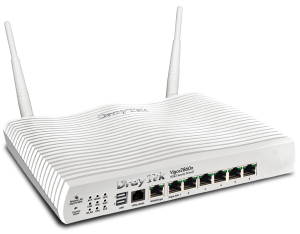Wires-only self Install to come to UK FTTC services
Article
Broadband Router Options for UK FTTC VDSL ISPs – 2015 UPDATE – ISPreview UK Page 2
My Comments
When a person signed up to “fibre-to-the-cabinet” next-generation broadband service in the UK, they would have to make an appointment with a BT Openreach technician to install their VDSL2 modem and rewire their telephone service. Here, you then had to make sure you had a broadband router with an Ethernet WAN connection on the “edge” of your home network which is something you would have to do for fibre-to-the-premises (all-fibre) setups.
Now BT and others are offering this service on a “self-install” or “wires-only” basis where they do the work with getting you ready for next-generation broadband at the FTTC cabinet only. You would have to buy your own VDSL2-capable modem router and microfilters to benefit from this service. This is similar to the current practice of providing ADSL in the UK, Australia and most other countries.
There are an increasing number of high-end modem routers available from most of the well-known home-network equipment names like Draytek, Billion, and TP-LINK. But the VDSL2 modem must work to UK standards which means that it would be a good idea to go to local online or bricks-and-mortar outlets to purchase that VDSL2-compliant modem router.
Bear in mind that some high-end ADSL2 modem routers that are advertised as VDSL2-ready may implement a software-programmable modem which can be set up to “do VDSL2”. Here, check on the manufacturer’s Webpage for a firmware update that opens this functionality and make sure this update is “fixed” to UK requirements.
As well, for anyone around the world who is benefiting from VDSL2-based “fibre-copper” services and having it on a “self-install” or wires-only basis, make sure that you are dealing with equipment or firmware that works to the standards supported by your ISP or infrastructure provider.
To start you off, consider the Draytek Vigor 2860N as a flexible VPN endpoint wireless router for your small business or the Billion BiPAC 8800AXL AC1600 wireless router as modem router ideas for your FTTC-driven home or small-business network.

